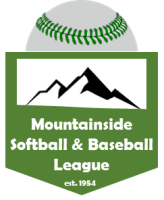MSBL offers a spring recreation season for youth in grades Pre-K (age 4) - 8th grade.
- Goals/Mission/Principles:
- to ensure each participant registered for our program has a safe, fun, and enriching experience with baseball/softball.
- All players who register will get to play. There are no cuts or player evaluations
- Fun over competition
- Territory: Our recreation program serves Mountainside youth. Our teams play against neighboring towns: Springfield, New Providence, Kenilworth, Berkeley Heights and Garwood.
- Registration typically runs from Mid-December to mid-January. Parents wishing to register their children should read through these tabs to understand our Rec program and set expectations accordingly.
- Fees: Participation Fees for the Rec Program are set by the Board of Directors on an annual basis ahead of when registration opens. Rather than update this Overview page every year, fees are communicated in registration announcements and are visible in the online registration form.
- Following registration is a Draft to form Teams. Details on the Draft are in the Rostering section.
- Our Juniors softball division offers a skill-based program for our youngest softball players that includes weekly practices and scrimmages. This is for children in Pre-K (age 4) through Kindergarten.
- We hold a Spring Cleanup Day to prepare the fields and practice areas for the season.
- Once our field are ready, we kick off with some pre-season practices and hold our Opening Day Parade & Ceremony. The parade starts on the corner of Wood Valley Road & Bridle Path and makes its way to Major League Field, where we hold our Opening Ceremonies. We have team pictures and games after the ceremonies.
- Our Regular season is followed by Playoffs where all teams compete in a single elimination post-season to determine the league champion. Our T-ball, American League, and Junior League do not have Playoffs.
- The season closes with Chuck Fernicola Championship Day, where we take time to reflect on the fun, sportsmanship, and skill-building during our spring season, and we recognize members of our MSBL community for their outstanding contributions. This is when awards will be presented for the season. Games/scrimmages/contests will follow.
Be sure to check out the other tabs on this page to learn more about the Draft process, equipment needed, our safety policies, rules and awards. Pictures & video from Opening Day and Championship Day can be found on our Photos & Videos page.
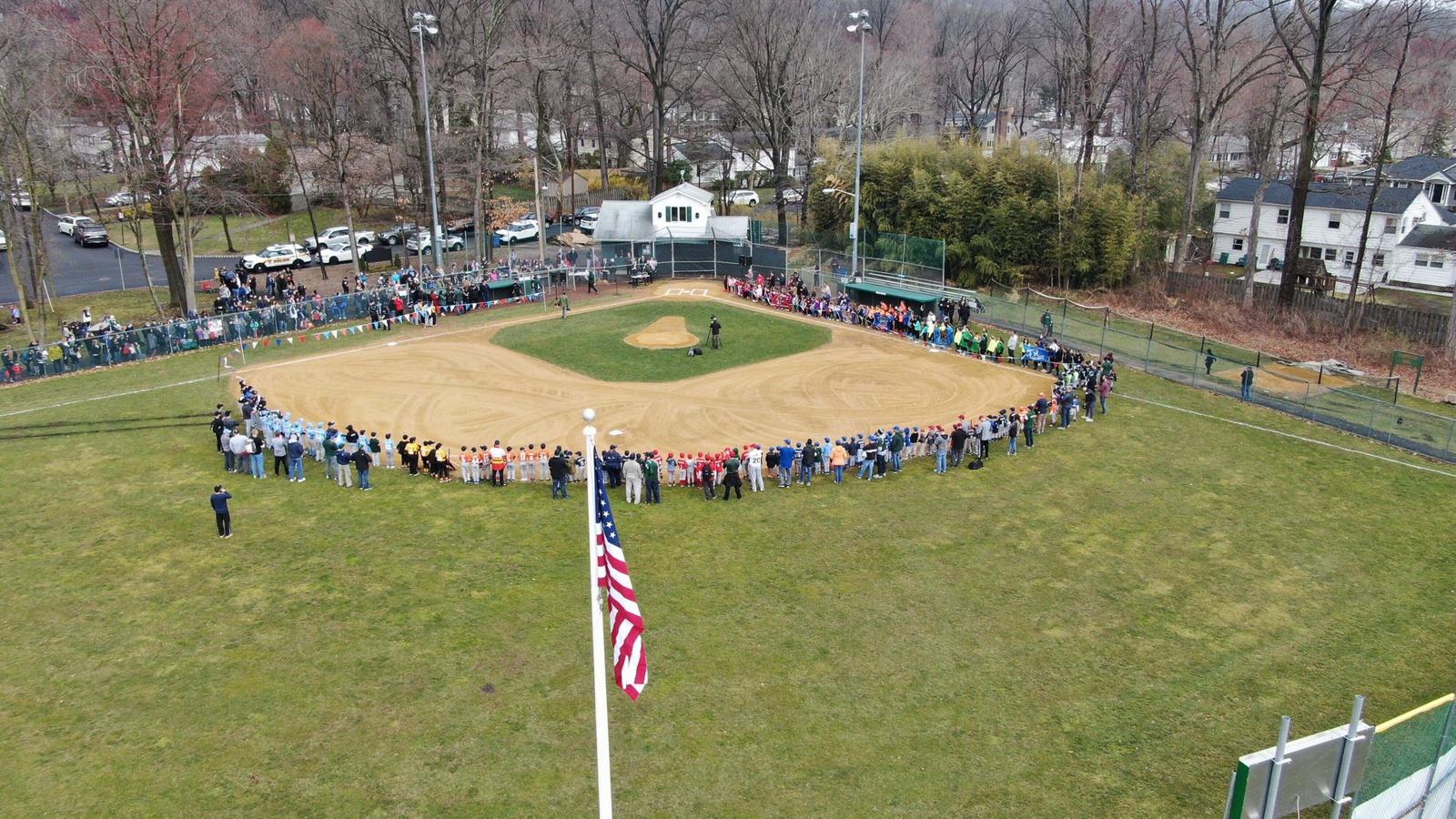
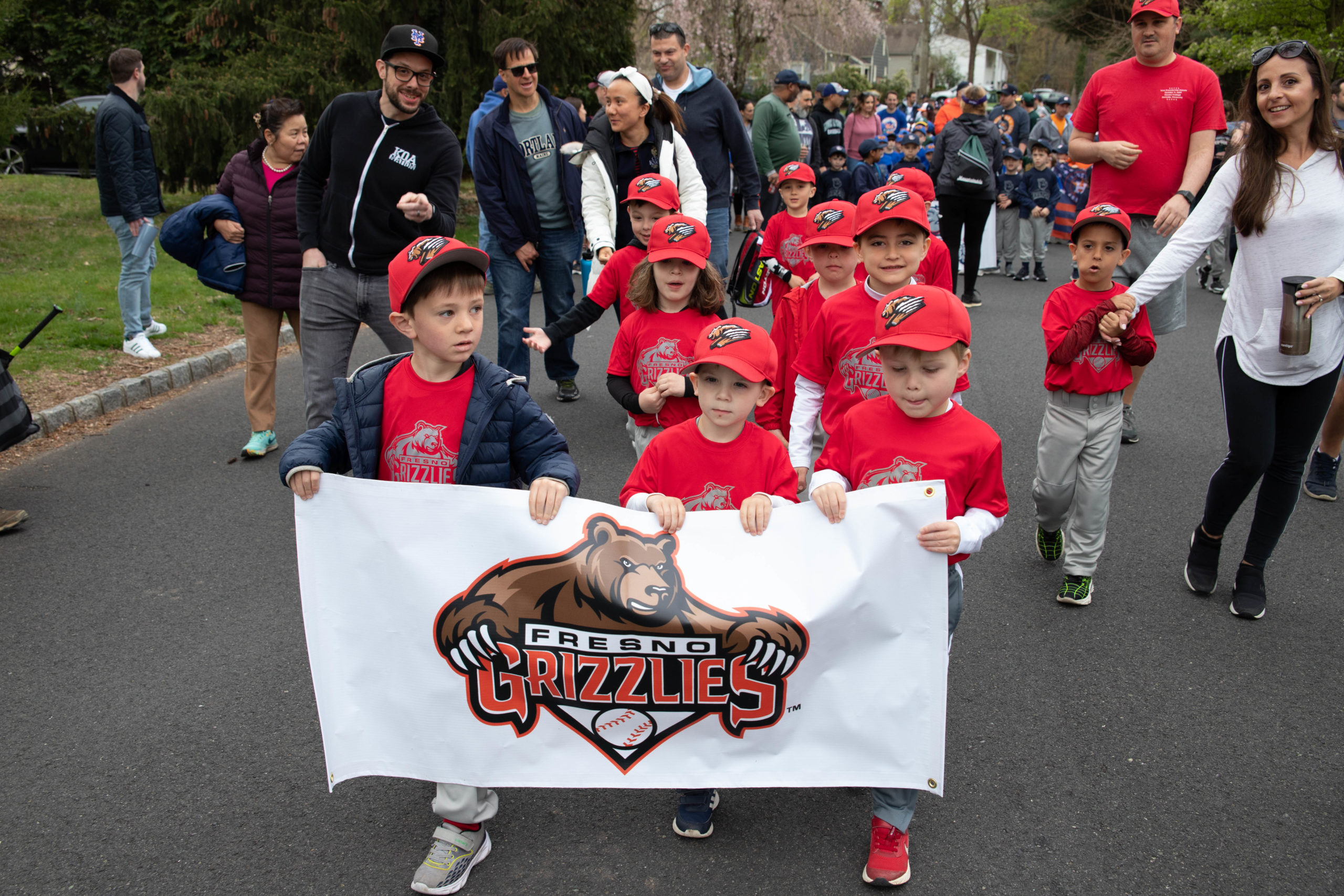
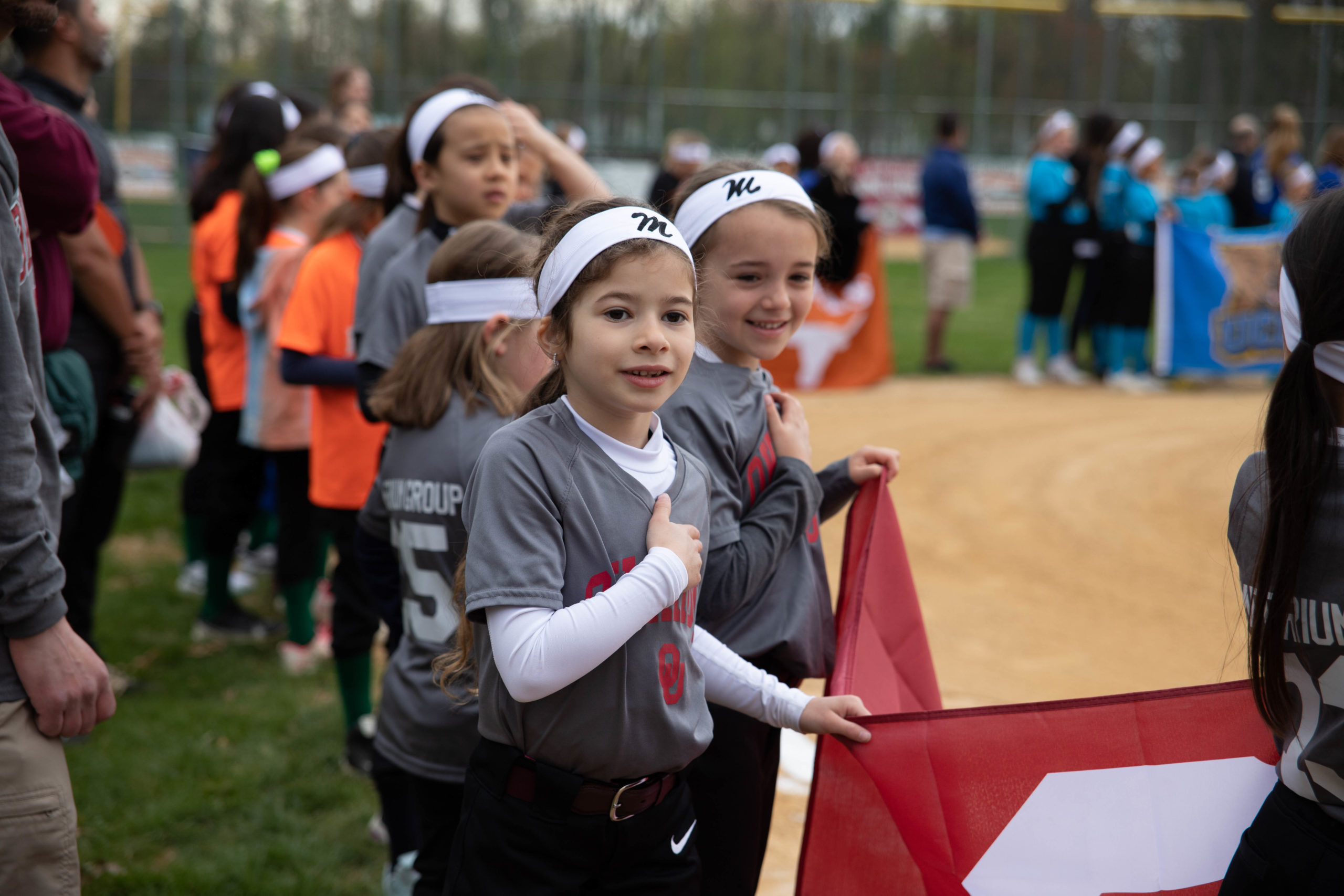
A new team with fresh faces means added friends. The memories that will last a lifetime begin when learning the exciting news of what team your child will play for. The draft is an essential part of every local league, and when done correctly, provides a proper disbursement of talent to ensure as fair a playing field as possible, so that each player can have as much fun as possible.
To help parents better understand the process of selecting teams, below is how we execute the Rec Draft in Mountainside.
- DRAFT PREPARATION:
- Baseball
- AMERICAN LEAGUE:
- Have all first-year players rated by previous year’s T-Ball VP
- Have all returning players rated by the previous year’s American League VP
- Identify pitchers to help ensure better arms are as evenly spread across the teams as possible
- MINOR LEAGUE:
- Make sure all players have been rated by the VP’s
- Rank all pitchers in all grades and identify catchers
- MAJOR LEAGUE:
- Make sure all players have been rated by the VP’s
- Rank all pitchers in all grades and identify catchers
- AMERICAN LEAGUE:
- Baseball
-
- Softball
- DIVISION 3:
- Have all first-year players rated by previous year’s Softball Rec VP
- Have all returning players rated by the previous year’s Softball Rec VP
- Identify pitchers to help ensure better arms are as evenly spread across the teams as possible
- DIVISION 2:
- Make sure all players have been rated by the VP’s
- Rank all pitchers in all grades and identify catchers
- DIVISION 1:
- Make sure all players have been rated by the VP’s
- Rank all pitchers in all grades and identify catchers
- DIVISION 3:
- Softball
- DRAFT DAY PROCEDURES:
- ALL LEAGUES:
- Managers must show up WITHOUT any paperwork or computers
- The league VP will provide all paperwork, including paper, pens and sheets
- Ratings sheets will be handed out at the start of the meeting and collected at the end
- NO documents provided by the league can go home with the managers. Managers can bring home their roster written on a separate sheet of paper with names only. The League VP will circulate official rosters and contact information as soon as possible after draft is finalized. Stress the importance of sharing information during the night with all managers.
- Remember, the goal is to leave the room with evenly matched teams!!!
- The VP of the league will run the draft, with oversight by the MSBL President
- The Player Rep (Vice President or Board Member) may also be present to ensure proper draft procedures
- ALL LEAGUES:
- ORDER OF DRAFT:
- Hand out ratings lists of players (disclose any special player circumstances- club ball, school team, other sport/activity conflicts)
- Discuss or adjust any players needing a ratings adjustment
- Discuss overall goals of league, importance of communication during draft and equality of teams
- Determine draft order:
- Older pitchers get drafted first in Majors, then younger pitchers in Majors; pitchers get drafted first in Minors and American
- If a manager has a child listed as an older pitcher, then they draft their child in the spot in which their child falls
- g., if Mr. Smith is a manager, and John Smith is rated the third pitcher, then Mr. Smith drafts his son in the third spot.
- If John Smith is a younger pitcher, then Mr. Smith picks a number to determine his draft order
- All other managers will draw numbers to determine draft order of the remaining spots
- Once the order is determined, then the first round is held (all pitchers).
- At the end of every round, the order of picks is re-shuffled. The total amount of points for each team is determined, and then the order for the next round is determined from lowest to highest.
- If a manager has a child in a particular round, they automatically get their child in that round, regardless of their “score”
- After pitchers the draft proceeds with the oldest age group first
- If there are siblings, the team that drafts the first sibling gets the second sibling in the round that the player is placed
- Each round goes along in an age group until there are LESS THAN a full round of players left; at that point, proceed to the younger age group
- At the end of the draft, those players left from the older group and the balance of the younger group will be selected
- When there is less than one full round of players left, then the order changes:
- Rank the teams from highest to lowest
- The number of players left determines the number of teams that will select another player
- The highest ranked team gets the lowest rated player, and so on until the players are all selected
- The lower rated teams at the end will not select a player
- WHY DO WE DO IT THIS WAY?
-
- In the past, we have had numerous issues arise because of the draft process. Over time, we have tried to eliminate as many variables as possible to achieve our goals without putting things out that can embarrass us. Leaked rating sheets, comments repeated, and other sensitive things have been leaked out of the room, causing great pain to players, parents, and MSBL. Here are some practical explanations for the logic:
-
- Ratings v. Tryouts - We have always had issues with “tryouts” or practices with the purpose of rating a player. These events always bring out the worst in the parents and open us up to a lot of second-guessing on our methods. Instead, we rely on the fair, unbiased experiences of our VP’s to give us a start at equality at the draft.
-
- Managers Not Bringing Anything - Over the years, we have had managers bring in “cheat sheets” from home, their own ratings sheets, and even laptop computers with private scouting reports! It was ridiculous! To avoid ANY appearance of over-competitiveness, we insist that every manager come empty-handed, and we will give them everything that they need for the night. Even at the end, we do not want any hand-written notes with ratings, names, etc. on anything, so we will collect all papers at the end of the night, with the managers taking home only the names of their players.
-
- Drafting Pitchers First - We always try to make sure that the parity in the league is as close at the start as we can make it. A huge part of that is making sure that the better pitchers are spread out throughout the league and that any one team is not stacked with a lot of higher caliber pitchers. That is why we draft the pitchers first and rate them differently from the rest of the field.
-
- Drafting by Age - Instead of co-mingling the entire league together and drafting everyone at once, we draft year by year. In the past, certain managers, to try to get a lot of their child’s friends, would draft most players of the same age. This is never a good thing for the league. First, it does not promote the true spirit of teamwork and what we are trying to accomplish as a league. Second, when these players are the younger age, it makes the quality of the team far weaker than the others. For this reason, we want to make sure that the breakdown by age is as even as possible.
-
- Lowest Ranked Players at the End - We save the lowest ranked players for each league until the end so that the lowest ranked players get spread evenly. The reason that the stronger teams get the lowest ranked players is to try to even out the teams. Giving the stronger teams the lowest ranked extra player helps accomplish this goal.
MSBL provides the following equipment for the Spring Rec season:
- Jersey (parents indicate size during registration)
- Socks
- Hats
Parents must provide the following:
- Pants
- Belt
- Cleats
- Helmet
- Face Guard (Softball)
- Bat
- Mitt
- Heart Guard (optional)
- MSBL (and Babe Ruth League, Inc.) requires all managers, coaches, board members, as well as any other persons/volunteers, who have consistent and direct contact with players through league sanctioned activities, to have a National Verified Background Check and Abuse Prevention Training every two years. Babe Ruth League, Inc. requires leagues to use services of Sports Engine for all background checks and abuse prevention training. An MSBL Board Member will provide links for the background check and APS Training once volunteers are confirmed via registration.
- All first-time managers and coaches must be certified through the Rutgers SAFETY Clinic (or equivalent). The Rutgers SAFETY Clinic (Sports Awareness for Educating Today’s Youth ™) is a three-hour program that meets the “Minimum Standards for Volunteer Coaches Safety Orientation and Training Skills Programs” (N.J.A.C. 5:52) and provides partial civil immunity protection to volunteer coaches under the “Little League Law” (2A:62A-6 et. seq.)
- The Rutgers SAFETY Clinic is set up through the Mountainside Recreation Department. The verification of this certification is held by the Recreation Department.
MSBL REC Rules
This page contains rules for our Rec program by Sport & Division. Scroll down to see the relevant section.
Baseball
2022 Interleague Major League Rules
- Rule: Majors – all rules as per Babe Ruth/ Cal
- Ripken with the below modifications
- Balks: 2 warnings per pitcher
- Batting Cages: Can be used in Mountainside during games. Cannot be used in Springfield during games.
- Call-ups: From lower league (no borrowing from teams in the same league), bat last, last resort to pitch.
- Dropped third strike?: Yes
- Game length: No inning starts after 1:45 (No time limit in Playoffs)
- Infield Fly Rule: In effect
- Pitches: 2 innings per pitcher per game maximum. Pitch count does not need to be reported.
- Players on the field: Nine
- Run Differential: 5 runs per inning max; 10 run mercy rule after 4 innings. In the last inning the team down can score enough runs until tied. Note, with a time limit the last inning may not be the 6th.
- Stealing: Unlimited
- Umpire Fees – paid by home team – have exact amount. Major; 2 umpires, $65.00 for carded plate umpire, $60.00 for carded base umpire, $45.00 for GL student/ base umpire
2022 Interleague Minor League Rules
- Rule: Minors – all rules as per Babe Ruth/ Cal Ripken with the below modifications
- Balks: No balks
- Batting Cages: Can be used in Mountainside during games. Cannot be used in Springfield during games.
- Call-ups: From lower league (no borrowing from teams in the same league), bat last, last resort to pitch.
- Dropped third strike? No
- Game length: No inning starts after 1:45 (No time limit in Playoffs)
- Infield Fly Rule: No
- Pitches: 2 innings per pitcher per game maximum. Pitch count does not need to be reported.
- Players on the field: Nine
- Run Differential:
- 5 runs per inning max;
- 10 run mercy rule after 4 innings
- In the last inning, the team down 5 runs or more can only score enough runs until game is tied.
- Note, with a time limit the last inning may not be the 6th.
- Stealing: Third base only. Runner must be batted in.
- Umpire Fees; Home team pays – have exact amount. Minor; 1 umpire, $65.00 for carded plate umpire, $45.00 for GL student
Softball
1st & 2nd Grade Division Rules ("Division 3")
-
- 6 innings or time limit. No inning started after one hour and 30 minutes.
- After the first inning, no infield or outfield warm-up balls permitted. (Allowances made if time is not an issue)
- Ties are permitted. If the time limit is reached with the game tied, it will be recorded as a tie game. (Sunday games will not allow ties)
- 10 players in field, free substitution, re-entry rule not in effect, substitutions need not be announced. Only 6 players, including the catcher, are allowed to be positioned in the infield at the start of the play. The infield extends 10 feet beyond the base path.
- We highly discourage forfeits. Therefore, as long as a team can field six girls, the game will be played.
- No Infield fly rule and no dropped third strike.
- Coaches will pitch to their own players from 35 feet. Walks are not allowed. The batter shall be called out after 3 strikes (swinging), or after she receives 6 pitches and does not put the ball into play. Except: The umpire will call the sixth pitch. If the sixth pitch is not put into play or fouled, and is called a strike, then the batter is out. If the sixth pitch is not put into play or fouled, and is called a ball, the batter gets another pitch, which will also be called by the umpire.
- The coach who is pitching must make every effort to avoid interfering with the defensive play on a batted ball. If, in the umpire’s judgment, the coach intentionally interferes with a defensive play or if the coach fails to make a good faith effort to avoid the interference, the play should be called dead, the batter shall be called out, and the runners shall return to the bases they occupied prior to the play. The coach who is pitching must remain silent from the start of the pitch until the end of the play.
- Cinderella batting – all players in attendance bat. The additional players are treated as EP’s and can freely substitute into the field. If a player must leave or is injured, the player is skipped in batting order without an automatic out being counted. If a player arrives late, she is added to bottom of batting order as an additional EP.
- Inning End / 4 run max – The inning comes to an end when: 3 outs have been recorded OR 4 runs have been scored.
- NO RUN LIMIT IN THE LAST INNING; THE LAST INNING MUST BE ANNOUNCED IF TIME IS AN ISSUE
- Mercy rule – 15 runs after the losing team has batted four times.
- Teams are permitted to bunt (2) times per game/not to be done in the same inning, no stealing (runners are encouraged to practice leading). Runners will be called out if they leave the base before the ball crosses the plate or is hit.
- Courtesy runners may be used for the catcher at any time. The courtesy runner is the last batter to make an out.
- End of Play - Base runners are limited to one base on all batted balls hit in the infield. No advances are allowed for overthrows to any base. Base runners may take additional bases on all batted balls reaching the outfield (that make it to the outfield by ground or out), as defined by any ball that goes 10 feet beyond the base path or any ball that is fielded by an outfielder. If the base runner is not at the halfway point between the bases once the ball is secured by an infielder, the runner will be sent to back to the previous base. If the runner is at the halfway point or beyond once the ball is secured by an infielder, the runner may advance, at the runner’s risk.
3rd – 5th Grade Division Rules ("Division 2")
-
- MSBL Program Objective: Teach our girls the fundamentals of softball, provide them with an opportunity to practice and develop their skills, and help them learn good sportsmanship while having a positive, enjoyable experience as a participant.
- Junior Division Program Objectives: The Junior Division will build on the basic skills learned in the instructional division (grade 1-2). An emphasis will be placed on proper mechanics, learning and playing field positions, and sportsmanship. The milestone skills the girls should achieve in this league are the following:
- Development of throwing and catching skills
- Stepping with correct foot
- Catching with two hands
- Catching with glove fingers up
- Development of fielding skills
- How to field ground balls
- How to field fly balls/ pop ups
- Basic situational plays
- Basics of pitching and catching
- Fundamentals of hitting
- Development of base running skills
- Introduce concept of bunting, leading, and stealing
- Introduce concept of tagging up
- *** Before moving on to the Senior Division (Grades 6-8), every player should know how to properly throw, catch, and hit.
- Rules: The Amateur Softball Association (ASA) playing rules for Fast Pitch will be the standard set of rules with the following changes:
- ALL jewelry should be removed before playing begins. This includes earrings, necklaces, and bracelets.
- 11” ball will be utilized.
- Pitching distance should be 35 feet. Base distance should be 60 feet.
- With regards to pitching, there will be NO coach pitching and all styles of softball pitching will be acceptable. There will be an ASA umpire to call the game. If the pitcher walks 4 batters in a row OR hits 2 in a row OR hits 3 per inning, the pitcher MUST be removed and replaced with another player. No one pitcher will pitch more than 2 consecutive innings in a row or a total of 4 innings per game. During an at bat, the batter shall hit the ball, walk or strike out.
- Play stops when the pitcher has control of the ball in the circle. Runners cannot advance to another base unless the pitcher attempts an additional play.
- Drop-3 strike does NOT apply.
- Bunting is permitted and coaches are required to instruct this aspect of the game. Three bunts per game will be permitted. The league strongly recommends all 3 bunts to be utilized during the game.
- Any player throwing the bat will be warned along with the rest of the players on that team. The next player from that team to throw a bat, will be called OUT.
- Leading: Baserunners are not allowed to leave the base until the pitch has left the pitcher's hand. The “look-back” rule is in effect. (“look back” - is when the pitcher has control of the ball in the pitcher's circle and is not attempting to make a play on a runner (including a fake or threatened throw); any runner stopped on a base must stay on the base, and any runner not on a base must immediately either advance toward the next base or return to the previous base. Any subsequent change in direction or stop by the runner while off the base will result in the runner being called out, so long as the pitcher does not attempt to make a play.) Coaches are encouraged to instruct these aspects of the game.
- Stealing is permitted but only between second and third base, with a maximum of 3 steals per inning. Coaches are encouraged to instruct this part of the game. Runner cannot advance to home on an overthrow.
- Runners must slide to avoid contact at 2nd & 3rd bases, as well as home plate; Umpires' point of emphasis, defensive obstruction.
- An inning will end once three outs have been made, or 5 runs scored in an inning. The five-run rule will be in effect except for the last inning. The five-run rule is as follows: the inning will end upon the offensive team making three outs, or after a play in which the offensive team has scored the fifth run of that inning. All runs scored after the 5th run will not count. The offensive team will then take the field. There is no limit on runs in the last inning.
- Only 10 defensive players may be on the field at one time. A minimum of 7 seven players is required in the field at all times. Players are to play both infield and outfield positions and are to be given the opportunity to play all positions on the field (based on skill level and coaches discretion).
- Catchers are to wear a helmet, approved mask, chest protector and shin guards at all times. (They may use a regular fielding glove)
- Free substitution. No player may be out of the field for 2 consecutive innings, and no player shall sit out for the second time until everyone has been out once.
- Helmets with face guard must be worn by batters, base runners, and on deck batters.
- Infield fly rule is not in effect.
- Complete uniforms must be worn to all games. (Uniform shirt, softball pants, socks, cleats) Metal cleats are NOT permitted.
- Only one girl may be in the on-deck circle at any one time, and no player is allowed to practice swinging a bat in any other location. Coaches are to remind the girls of the importance of this (and all other) safety rules and are to insist that they be followed at all times.
- NFHS rule for pitcher's plate - at least one foot on to begin pitch.
- Safety rules and regulations may not be altered.
- Game times: No new inning after 90 minutes.
- After the first inning, no infield, outfield warm up balls. Continuing pitcher limited to 5 warm up pitches, including “coming down.” New pitcher gets 8. With 2 outs, use a courtesy runner for catcher, so she can gear up.
- A completed game is 4 1/2 innings if the home team has the lead. If the game is suspended prior to a completed game, when the game is replayed, the same runner shall be put on the same base and the same batting order shall resume until the game has been declared complete.
- ALL RULES are subject to change, modification, or clarification during the course of the season by the league directors, should they think it necessary.
- Development of throwing and catching skills
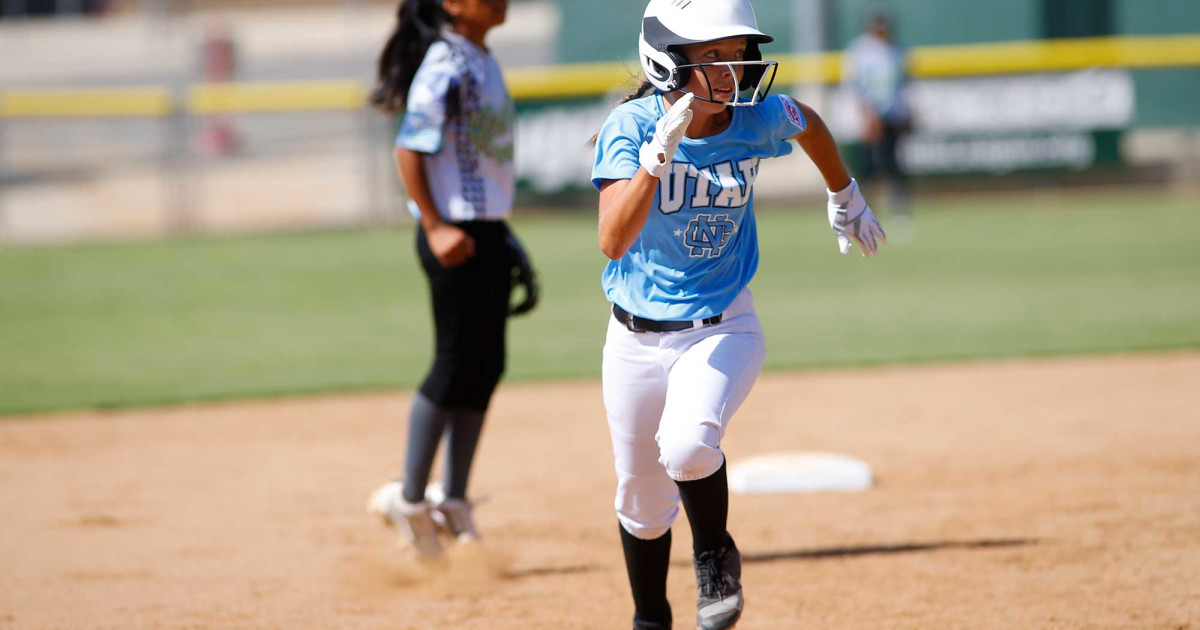
Hustle Award
Recipients of this award give everything they have to the team and the game.
Presented to a 4th & 6th grade baseball player, and a 5th & 8th grade softball player.
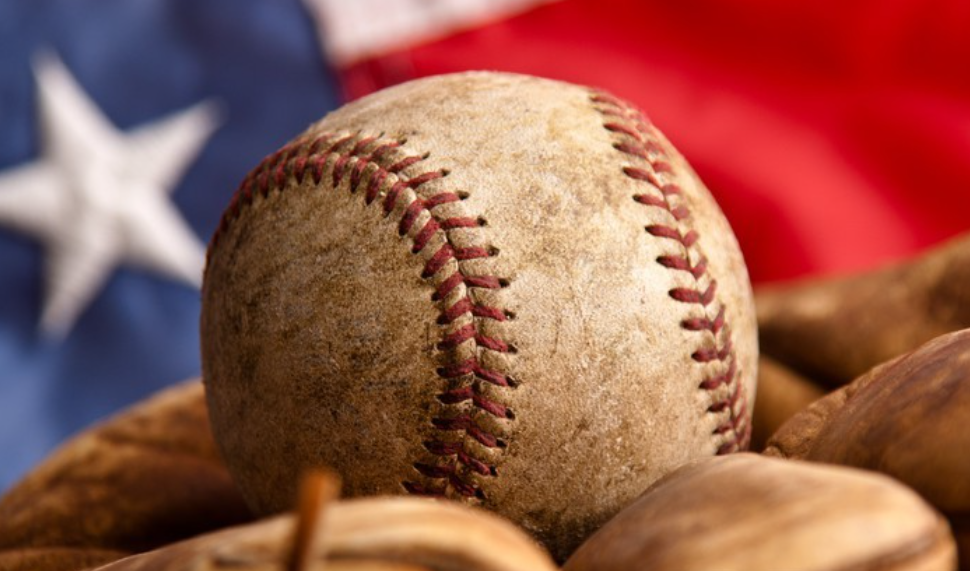
Scott Burdge Memorial Award
Recipients of this award best embody all qualities of sportsmanship, fair play, and teamwork.
Presented to a 4th grade baseball player and a Minor League Coach/Manager.

Windmill Award
Recipients of this award best embody all qualities of sportsmanship, fair play, and teamwork.
Presented to a 5th grade softball player and a Division 2 Coach/Manager.
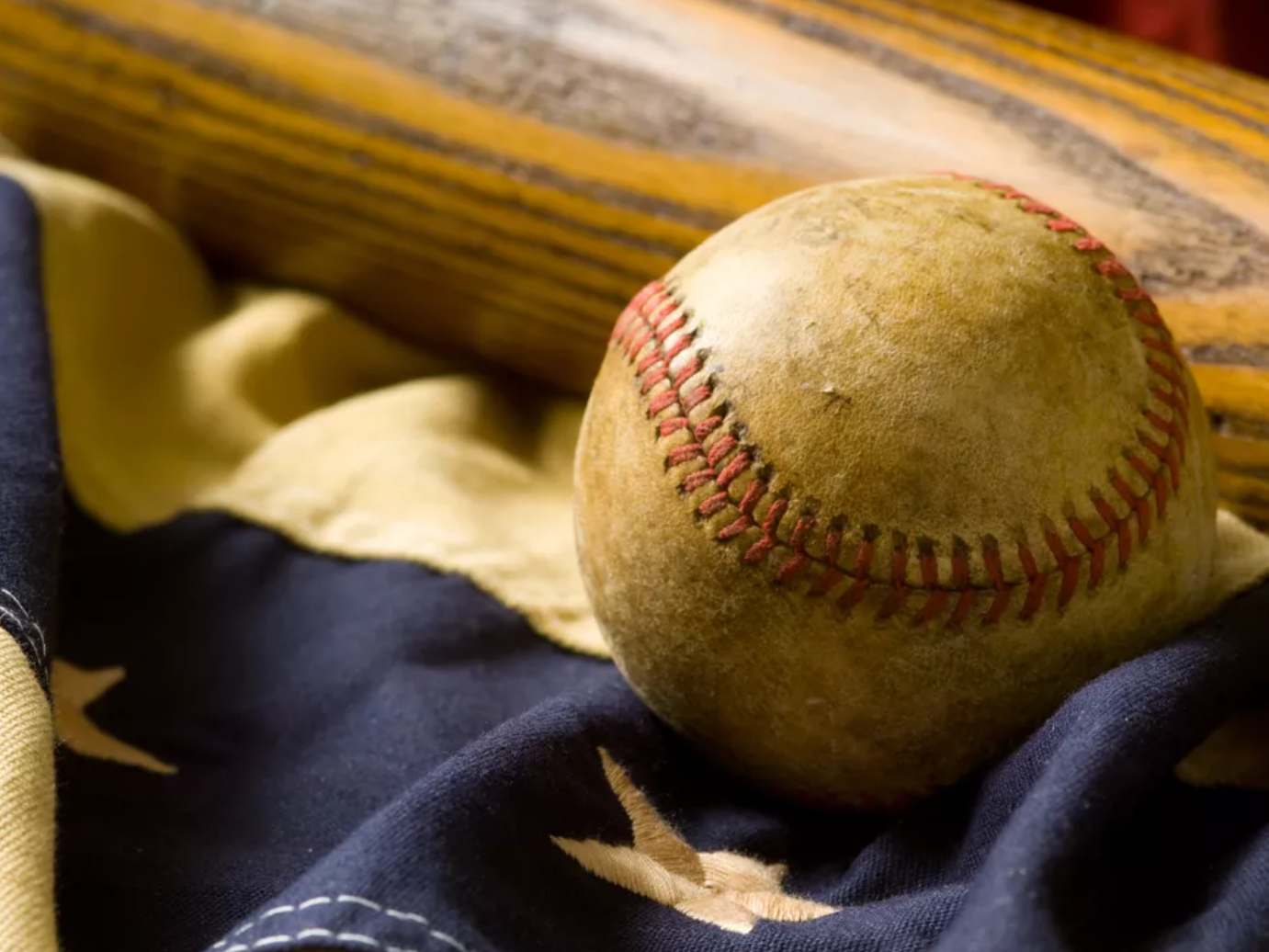
Ryan Faella Memorial Award
Recipients of this award best embody all qualities of sportsmanship, fair play, and teamwork.
Presented to a 6th grade baseball player and a Major League Coach/Manager.

Diamond Award
Recipients of this award best embody all qualities of sportsmanship, fair play, and teamwork.
Presented to an 8th grade softball player and a Division 1 League Coach/Manager.
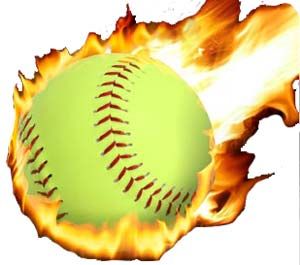
Carol Worzwick Dynamite Award
Recipients of this award best embody all qualities of sportsmanship, fair play, and teamwork.
Presented to an 7th grade softball player and a Division 1 League Coach/Manager.
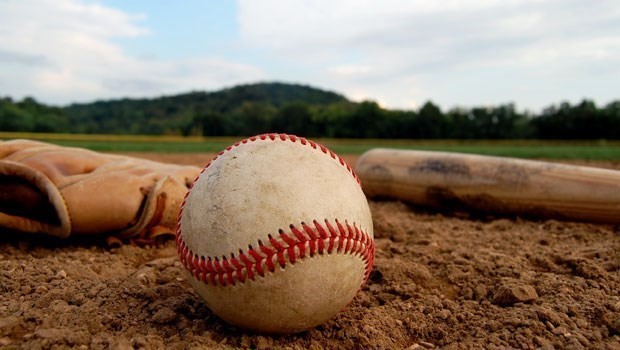
BJ Giannone Memorial Award
Recipients of this award best embody all qualities of sportsmanship, fair play, and teamwork.
Presented to an 8th grade baseball player (Pony League).

Frank Harpster Memorial Award
Presented to a volunteer that has gone above and beyond in their service and dedication to MSBL and the kids.
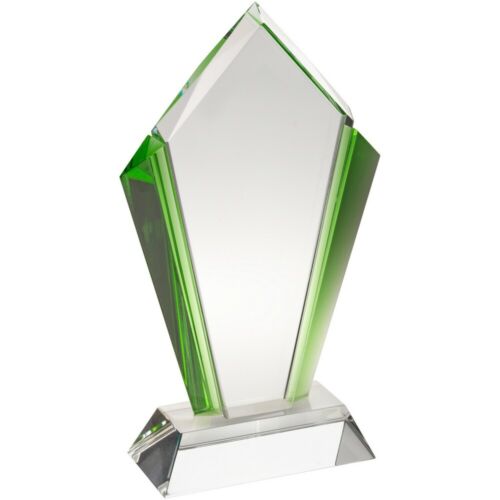
Chuck Fernicola Board Member Award
Presented to an MSBL board member who spends countless hours of dedication to the MSBL Board, the league, and the youth of Mountainside.
